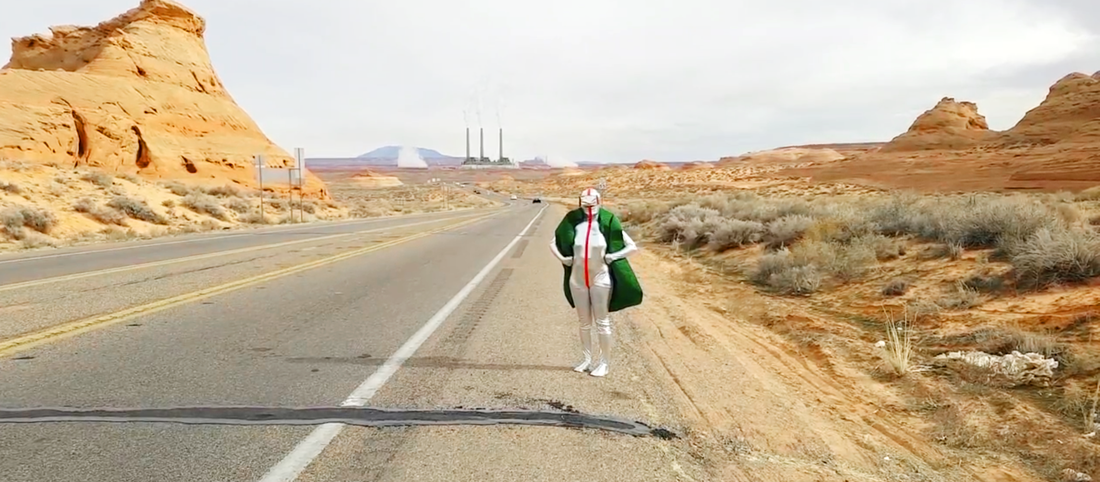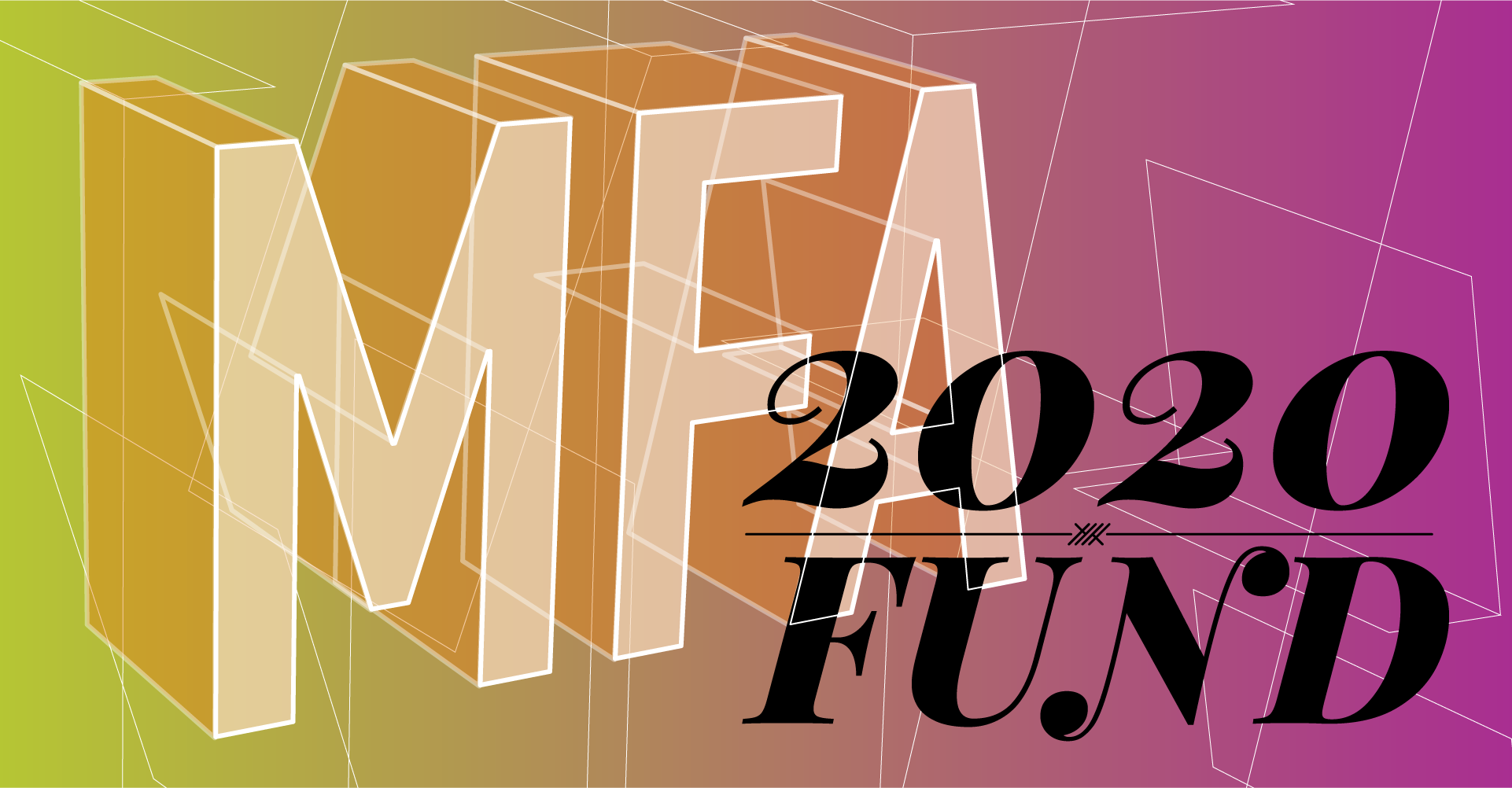The MFA program is back in full swing and we have a busy Spring Semester ahead! For those of us looking for some kickstarter motivation, here is a candid and inspiring conversation with alumna Zoe Cinel.
Zoe Cinel’s story starts out as an exchange student from Italy, trying to explore the diverse facilities at MCAD. Today, Cinel is a director, interdisciplinary artist, and community organiser. She has directed, shot, and edited videos for the Minneapolis Institute of Art, the Culture and the Creative Economy Office (City of Minneapolis), the Minneapolis College of Art and Design, Aniccha Arts, and many more. Here she generously tells us about her journey from Italy to Minneapolis, her transformation from designer to artist and her current exciting life in Minneapolis.
1. Which year did you graduate and what brought you to MCAD for your MFA? Could you speak a little bit about your background?
I graduated in 2018. I decided to come back to MCAD for the MFA after a semester as an exchange student. In 2015, I was working as a video maker and photographer in Italy. At MCAD I took a variety of classes such as printmaking, acting and gender, art and society that enlarged my perspective about what art is. This led me to experiment with materials and tools. My background is in graphic design and activism. I am a self-taught curator and videographer but I never thought I could create large scale installations, learn how to weld, mix my interest in moving images and 3D objects.
2. How did your art change while you were at MCAD?
I never had a studio, nor had I ever exhibited in a proper gallery setting, before MCAD. Now, when I look back, I can tell it was art I was making back in my BFA and even earlier. But I could not identify as an artist! I had an identity crisis in my first year at MCAD. It was resolved in the summer by working on Aniccha Arts and Labor Camp production 3600 Cuts and on a collaboration with Frankie Castillo, It Takes Two. What changed was the self-confidence: I embraced myself along with the promise of a future of excitement and poverty!
I blame the strictness of my background in design and my cultural roots that made me so stubborn about identifying as an artist. In Italy, being a designer is ok while calling yourself an artist is not socially acceptable. People don’t take it seriously. Italy has barely figured out that the history of the arts has moved on. There is really good contemporary art scene in Italy, it is just that it is hidden like a Leprechaun: you can only find it somewhere over the rainbow.
At MCAD, having the space to experiment and move things around was life changing. The MFA gallery was my playground. I had so much fun working late nights on large scale installations! I miss that. The space and the dedication I put into completing projects like Placeholder and Out of Order, gave me confidence in my abilities to pull it together no matter what. It prepared me for more intense projects and life changing experiences such as CarryOn Homes and the Parking Ramp Project.
Also the chance to curate exhibitions in Gallery 148 and in the MFA Gallery led me to pursue a career as a curator. At MCAD I found myself. For that I have to thank the people who gave me their feedback, time and trust: mentors such as Pramila Vasudevan, Kerry Morgan, Piotr Szyhalski, Tom DeBiaso were milestones in my education and in my life. When it comes to MCAD I do really believe it is about the place but mostly it is about the people that make it feel like you can really reach to your most ambitious goals.
3. How has your work evolved since your time at MCAD?
Since graduating life has been and insane roller coaster of project after project: CarryOn Homes at the Commons, The Parking Ramp Project, Choreographer’s Evening 2018, Mn Artists Present: CarryOn Homes to mention just a few. Being busy is great. Also it means you are not totally starving as an artist. Lately I did not have much time to let my art practice develop naturally because I mostly had to deliver commissioned work but I found some space for creativity when experimenting with a series of performances: AR postcards and videos starring the character of the nonresident alien, an immigrant who travels from our of space to the US looking for home. The silliness of this project, in which I go around places dressed in a silvery full body suit with a red VR goggle on my face, lifts my spirit. It feels really good to be goofy, improvise and not take myself seriously for once. Performing has helped me step out of my comfort zone and my usual behind-the-scene role in performances. It gave me confidence. I am excited about possibly slowing down a bit in the next year or so, to collect my thoughts and to see where the alien can land on their Earth Odyssey.
4. How would you describe your practice now?
I work with many media but I can say that in many cases (not counting collaborations, that have a different nature depending on who I am working with) my work is connected by the ephemeral: my large scale installations are meant to be experienced and then they are gone. I like performance because it is a site and time specific medium. It never looks the same in videotape. In my most recent in project involving Augmented Reality, I am interested in its magical quality to create layers of appearance and disappearance on a physical object. I am always concerned with storage and waste. I try to reuse the material I bought for a project, the same way I edit the same b-rolls in more than one of my video projects. I like the idea of art conceived for travelling across the world but also art as a moment you get to share with that one, only place, with these unique people, in that specific moment of your life.
5. You have been a part of many collaborative art projects since MCAD. Would you have any advice for artists interested in such work? How does one approach the idea of collaboration?
Collaboration is a complex phenomenon. It involves many factors and it challenges your perception of art, work ethic, time, space, identity, values, culture, personal boundaries and communication. At times, it feels like looking at the mirror through somebody else’s eyes. But if you keep an open mind it teaches you how to better recognize your strengths and biases.
There are many modalities of collaboration, which I have experienced in my career. There are projects with a leading voice and many supporters, collaborations that originate from the curiosity of working together, projects with clear objectives, projects that will eat up your life, long distance collaborations and long-lasting ones, productions that change your life by plugging you into an entire community, just to mention a few. But there is much more to collaboration than that.
From a strategic standpoint, an artwork created collaboratively has the natural advantage of being already under the spotlight and attention of a network that resonates beyond your own. It might drive your career right up to the moon when you are trusted to assume responsibilities. A matter of fact collaboration challenges and improves communication skills, which is useful if you want to be living around people.
But collaborations can be hard, dragging and exhausting. Sometimes it requires trust and determination, adaptability, self esteem, patience, patience, patience, patience, patience and the ability to step back when your ego gets in the way of the project.
Sharing meals with your collaborators is always a good idea.
Overall collaboration allows for the creation of something bigger than me and you: it is the experience of us, which you simply cannot have on your own.
6. How has your Minneapolis experience been? What do you like about Minneapolis?
The Twin Cities are the land of art and snow for me.
It has been hard to live in Minnesota coming from a Mediterranean climate and culture, where nothing is ever too warm or too loud. Although, I have not gotten used to the complete silence yet. Sometimes the complete absence of people walking in the streets in the middle of the night still creeps me out. I come from the land of ten thousand tourists. But I have learnt to love the lakes. They are magical and peaceful places at dawn and sunset. And Minnesota nice taught me to be kinder and more diplomatic. So that is a good thing, I guess.
Oh and I struggle with food. It is a catastrophe. I miss the bread, coffee, ice cream, pasta and all of that. Food related homesickness is so bad that the first thing I did in NYC was walk all the way from Brooklyn to Little Italy just to eat a real pizza. Really sad story. Also quite expensive if you ask me.
Jokes apart, I am grateful for all the opportunities and support I was given here. In Minneapolis, I had the chance to meet people from all over the world, make art with them about things I deeply care about and be heard. That is a gift and I feel so lucky! The work ethic in the US weirdly fits me well and art is my thing. So Minneapolis must be the place for me.
7. What is next? Any new projects or jobs that are in the pipeline?
I am working on a few collaborative projects. I am focusing on my curatorial practice and getting ready to teach a couple very exciting classes in Spring 2020: the Grad Critique Seminar in the MCAD MFA program and the Performance Art and Digital Media class at Carleton College.
I have curated several exhibitions in the past four years. All great experiences I shared with awesome artists from theTwin Cities. One show that particularly resonated with me and the direction in which I want to take my curatorial practice in the future, was Limitless Spaces (MCAD MFA Gallery, 2019). It set me up on a mission to create new opportunities for local and international artists, who work with digital technology, and to build a solid international network.
The future of art history is in the new media: a battlefield where revolutionary, inclusive and decolonizing narratives must fight centuries of censorship. Narratives that have been historically oppressed by the dominant western idea of an artist, now have the chance to create spaces, visions and guidelines to design the everyday. Technology and hyper-connectivity have a massive impact on people’s lives. It shapes how we relate to each other, to space, time, history and identity. Artists have the ability to expose these power dynamics, when we are too busy to notice them. Working on Limitless Spaces was rewarding. It was a conjoint effort with curator Shirin Ghoraishi. We brought together voices of artists from all over the world, including countries such as Turkey, UK, Iran, China, Minneapolis, NYC and Chicago. We saw a positive response from the Twin Cities community as well. We need more spaces where technology unites rather than isolates and we need more people to work towards that.
As far as collaborations are concerned, I keep advocating for immigrant voices to be heard in public, through our CarryOn Homes project, and by working with artists in Italy, who are either experiencing immigration themselves or who are reacting to the current African immigration crisis on the Mediterranean shores. Currently, CarryOn Homes is working on a commission by Minneapolis Institute of Art, which will be exhibited this Spring 2020. I am also collaborating on a short movie about water and global migrations with multimedia artist Benedetta Manfriani. Besides, I am also co-hosting a series of international family Skype meals with my dear friend Meaghan Sweeney, who is an American artist based in Florence. I am very excited to see how all these different but connected projects will come together.
Photos provided by Zoe Cinel
For more updates on our alumni and current students, visit:
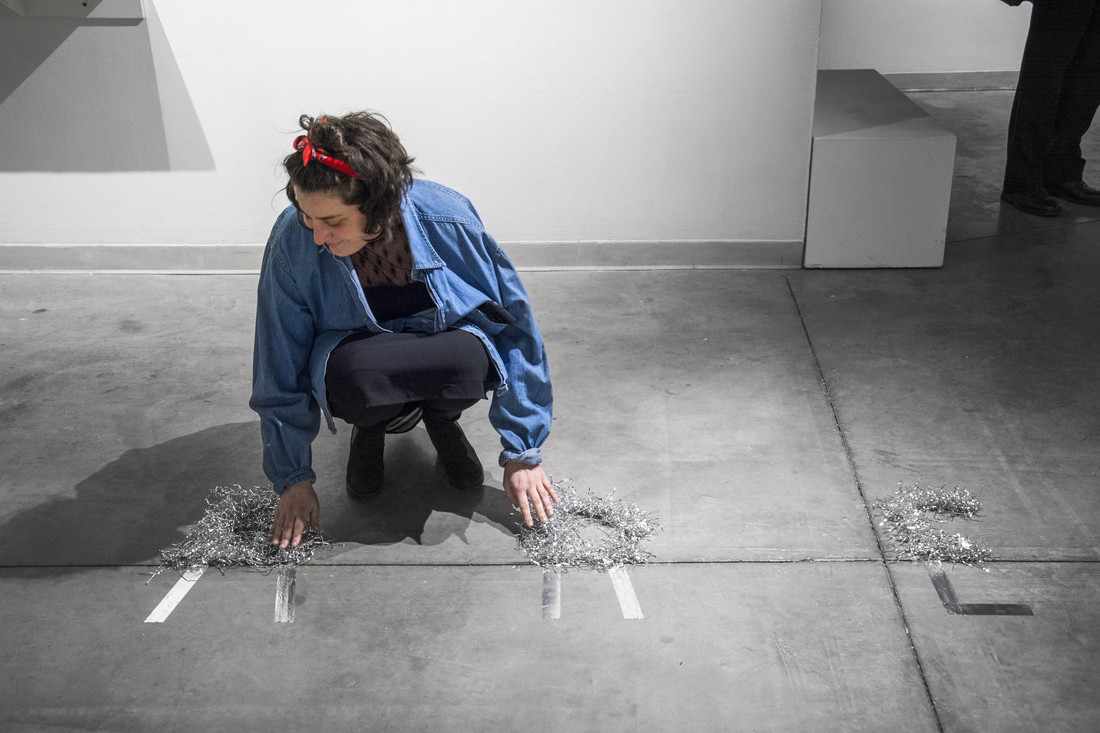
Zoe Cinel
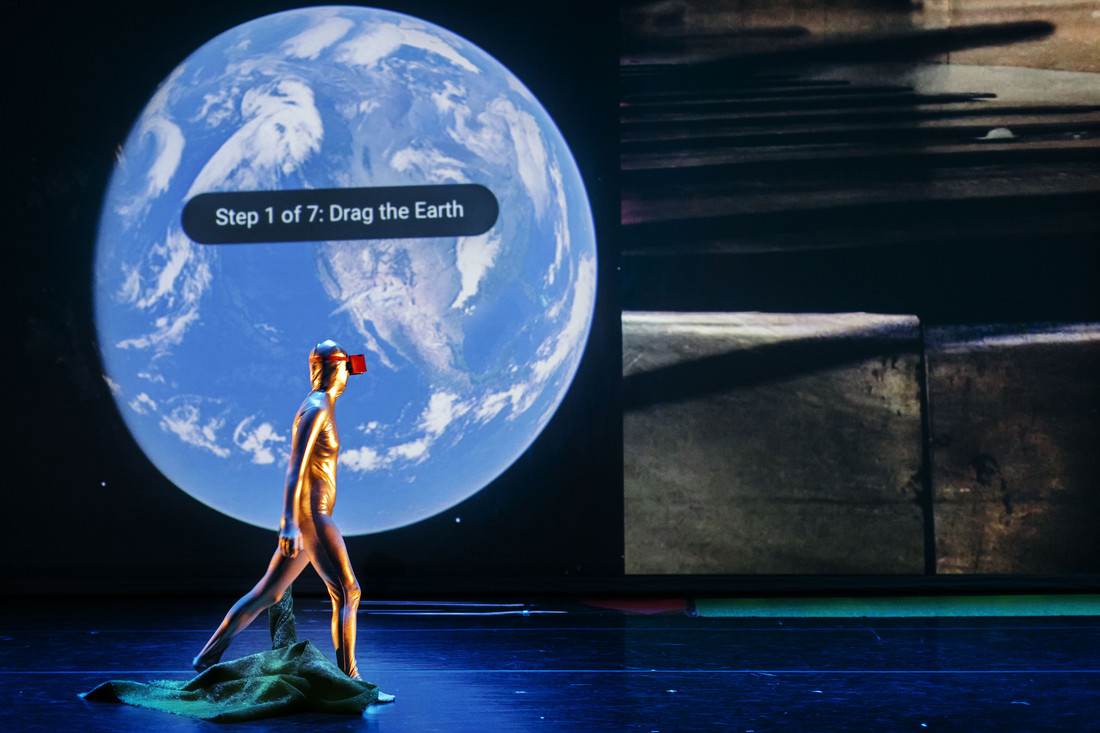
You Are Here by Zoe Cinel, 2018

Carry On Homes, Collaborative Project by Zoe Cinel '18 (Italy), Preston Drum '16 (USA), Aki Shibata (Japan), Peng Wu '13 (China) and Shun Jie Yong '18 (Malaysia)
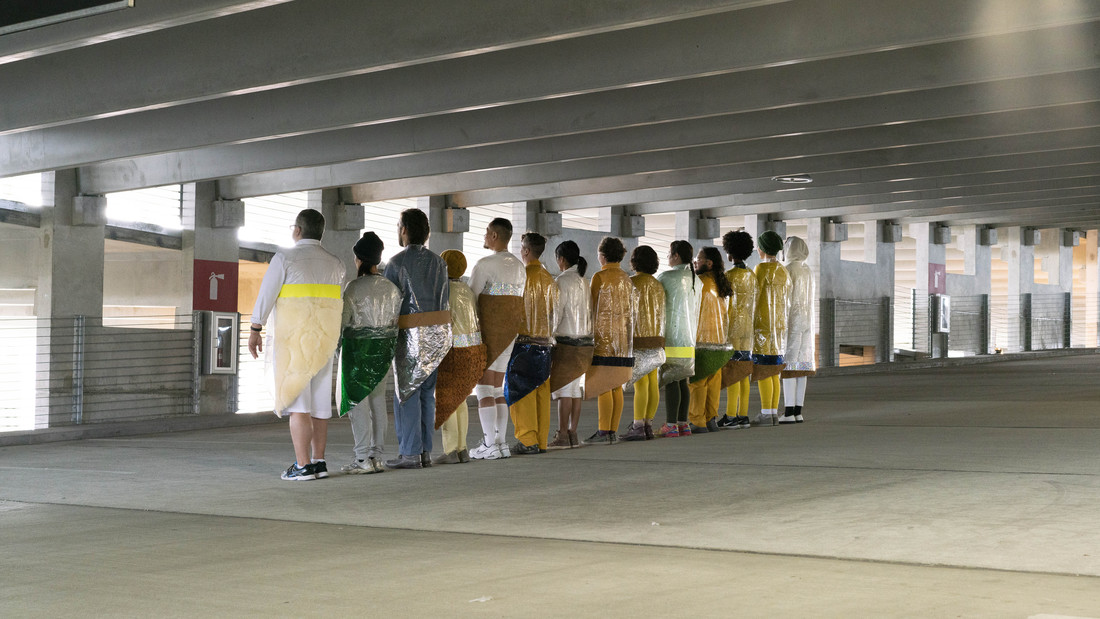
Costume Design by Zoe Cinel for Parking Ramp Project, 2018
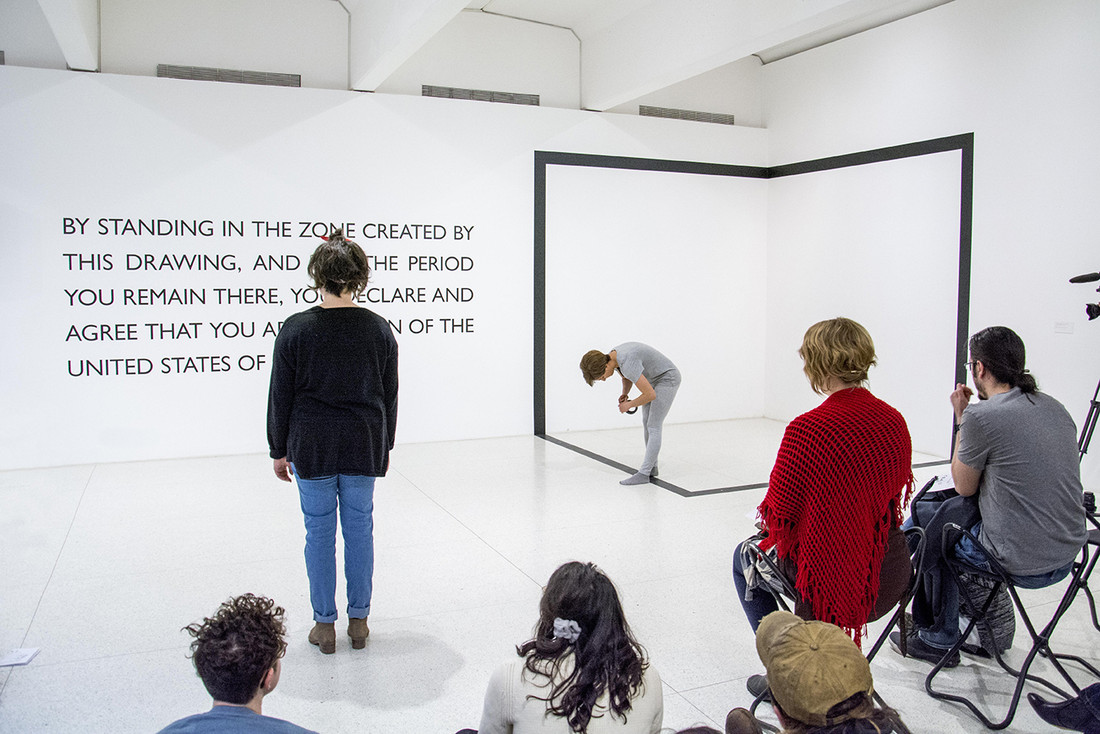
It's Not That Simple by Zoe Cinel
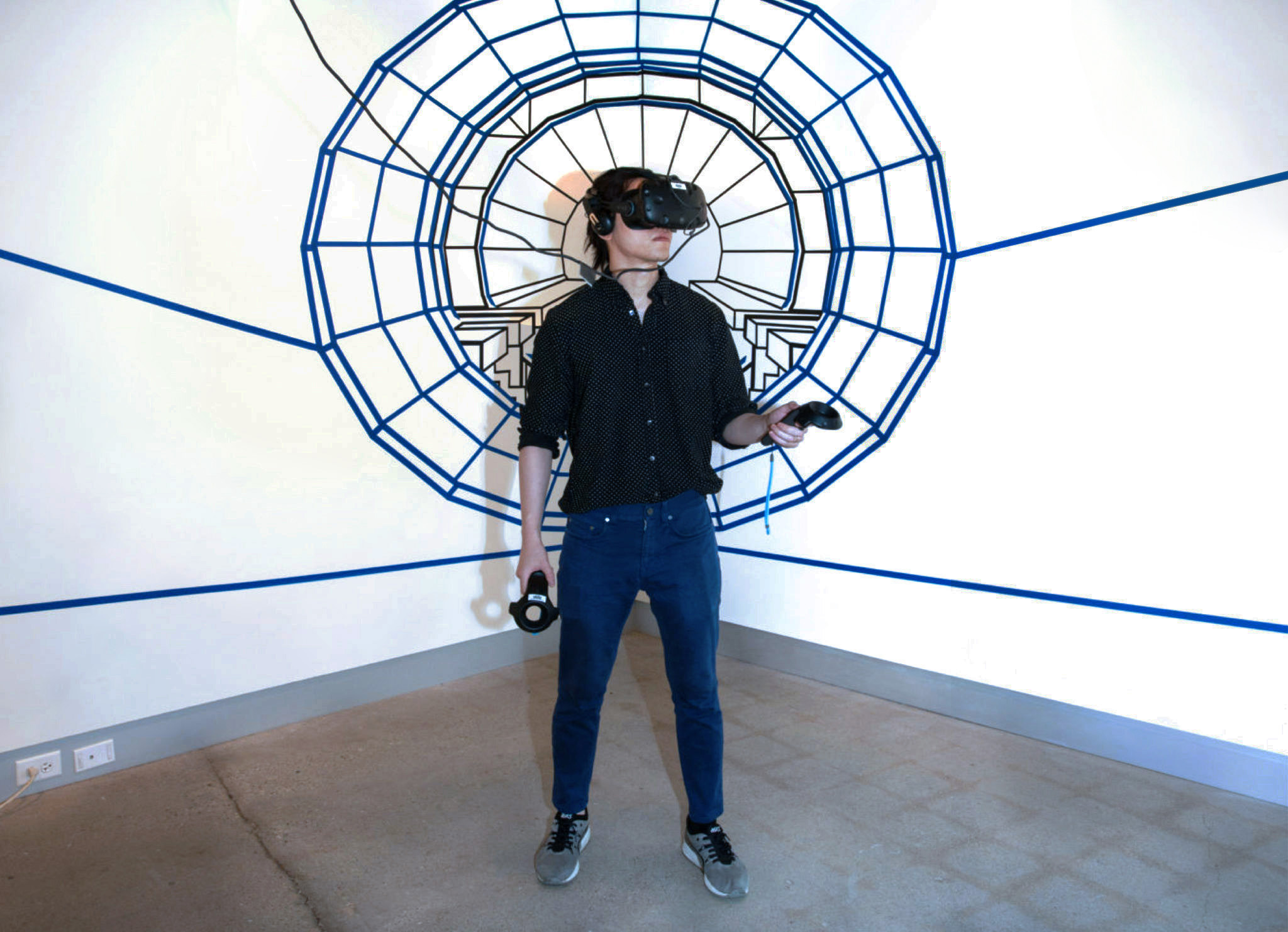
"Limitless Spaces," (2019) - an exhibition curated by Zoe Cinel ’18 and Shirin Ghoreyshi '20 at the MFA Gallery
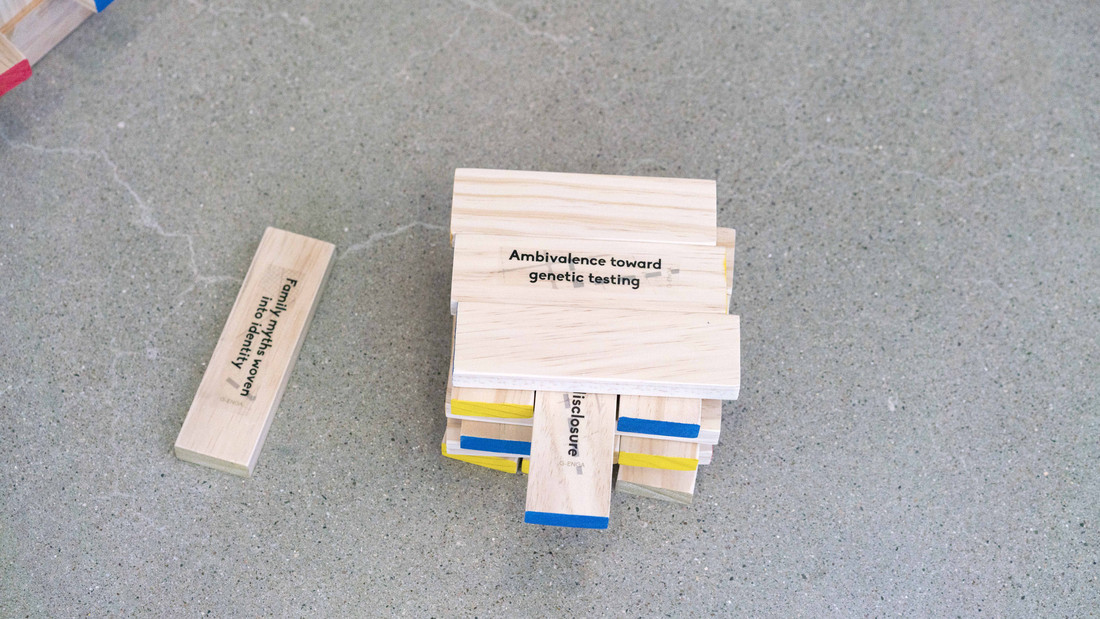
G-enga by Zoe Cinel, 2018


